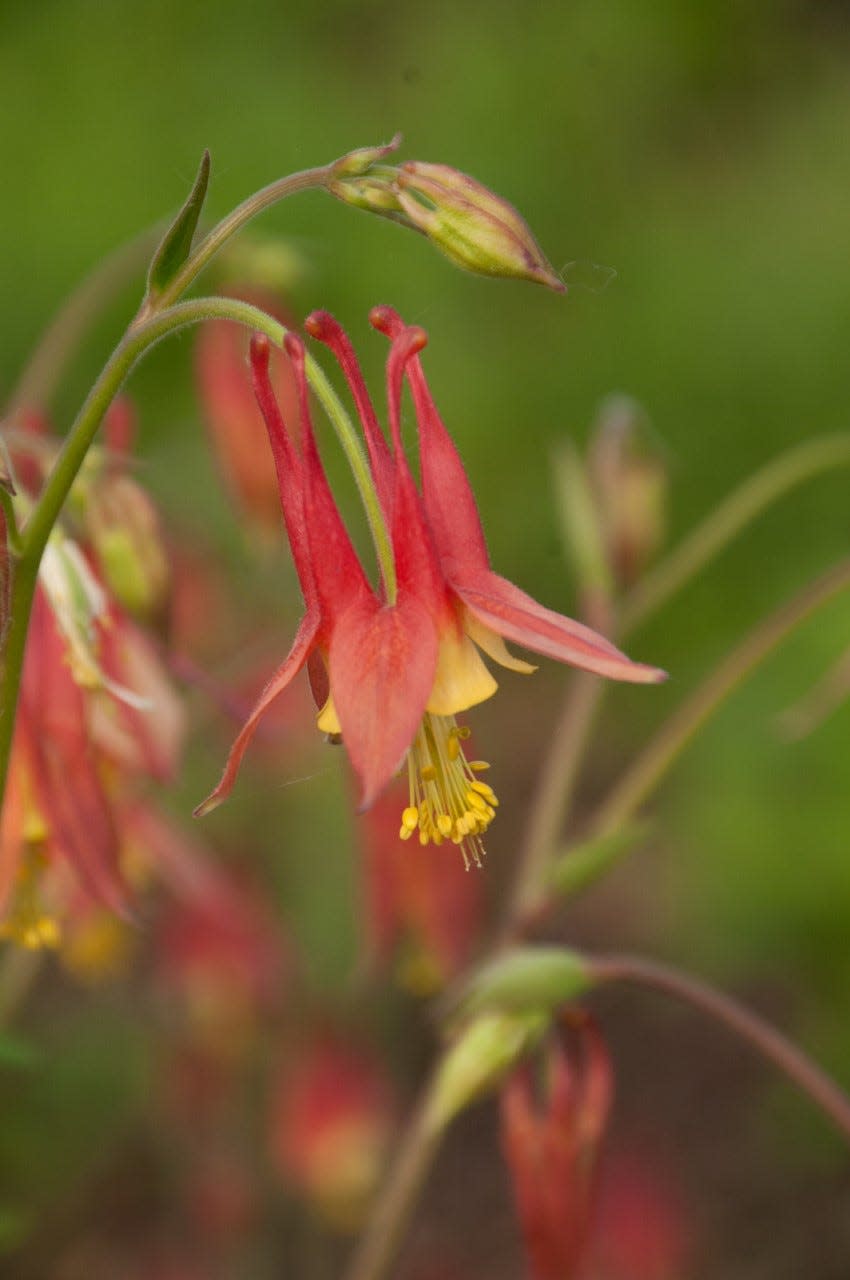Gardening advice on problems with columbine, tomatoes and more

Question: Something ate every leaf off one of my columbines! What was it, and how can I protect the rest?
Answer: Columbine sawfly is likely the culprit. The adult is related to wasps and lays its eggs on the columbine. A caterpillar-like larva hatches and eats the leaves of the columbine in late spring. It then drops to the ground, forms a cocoon in the leaf litter, and stays there until next spring. Fortunately, there is only one generation a year, so the damage is done and the rest of your columbine will remain untouched. Most healthy columbine will recover from the damage and new leaves should form on the damaged plant. Next spring, watch for the columbine sawfly larvae and remove any that are found.
Q: The top surface of the leaves on my June Bride linden tree have tower-like growths on them in various sizes. What might these be?
A: The unique growths on the leaves of your linden tree sound like a gall caused by a tiny mite. The tree forms these growths around the mites in response to their feeding, where the mites continue to feed, live and lay eggs. Once you see the galls the damage is done for the season and may or may not recur next year. This is just a cosmetic problem and not harmful to otherwise healthy trees, so treatment is not needed and not effective once the galls form.
Q: I planted three tomatoes in pots that are not growing as expected. The pots are big so I can’t lift them to empty excess water out of the saucer or move them into the garage when we get too much rain. I have fertilized twice with a quick-release fertilizer you mix in water. Is it a lost cause?
A: Don’t give up; we still have several months of tomato-growing weather left in the season. Elevate the pots on pebbles or some other item so it sits above the excess water that collects in the saucer. This will help avoid problems caused by waterlogged soil. Consider adjusting your fertilization. Container gardens do benefit from regular fertilization. I prefer a low nitrogen slow-release fertilizer that provides small amounts of nutrients over a long period of time. These require less of your time and effort and typically encourage balanced growth without interfering with flowering and fruiting. Whatever fertilizer you select, be sure to read and follow label directions.
This article originally appeared on Milwaukee Journal Sentinel: Gardening advice on problems with columbine, tomatoes and more
